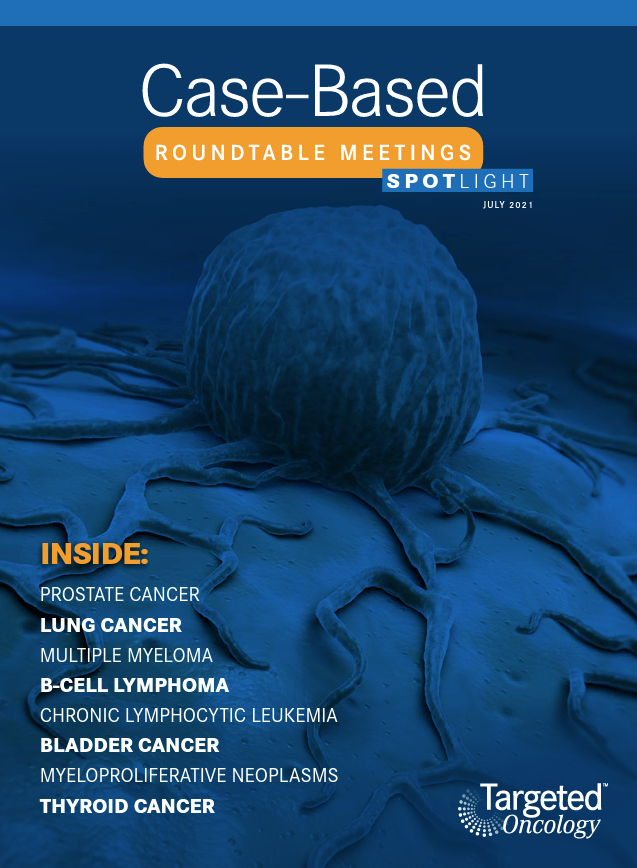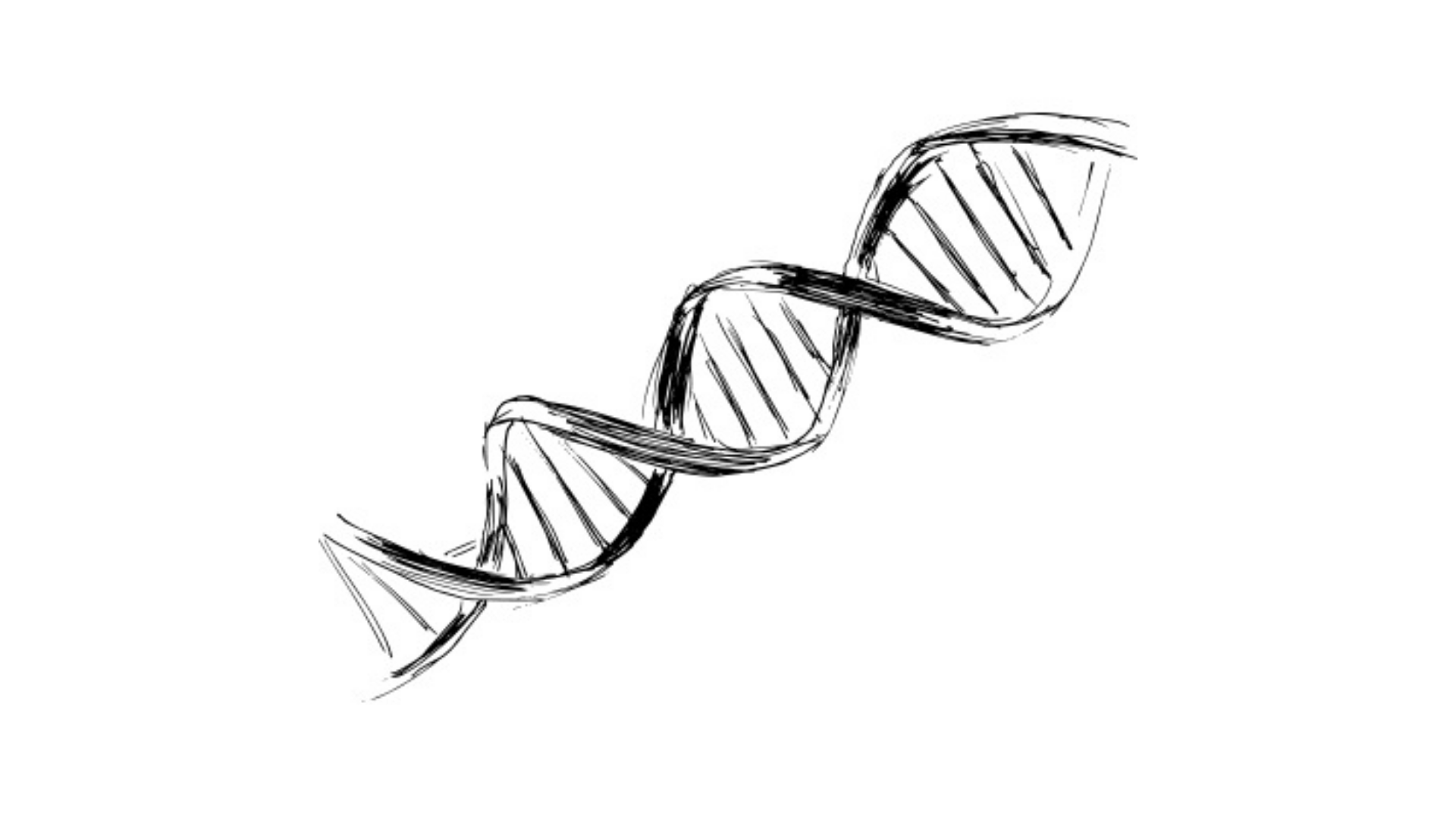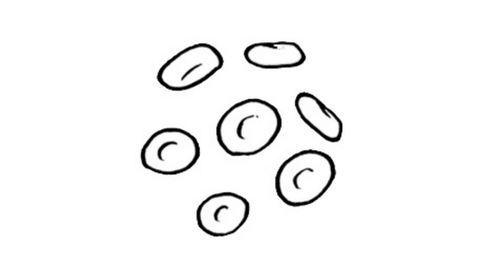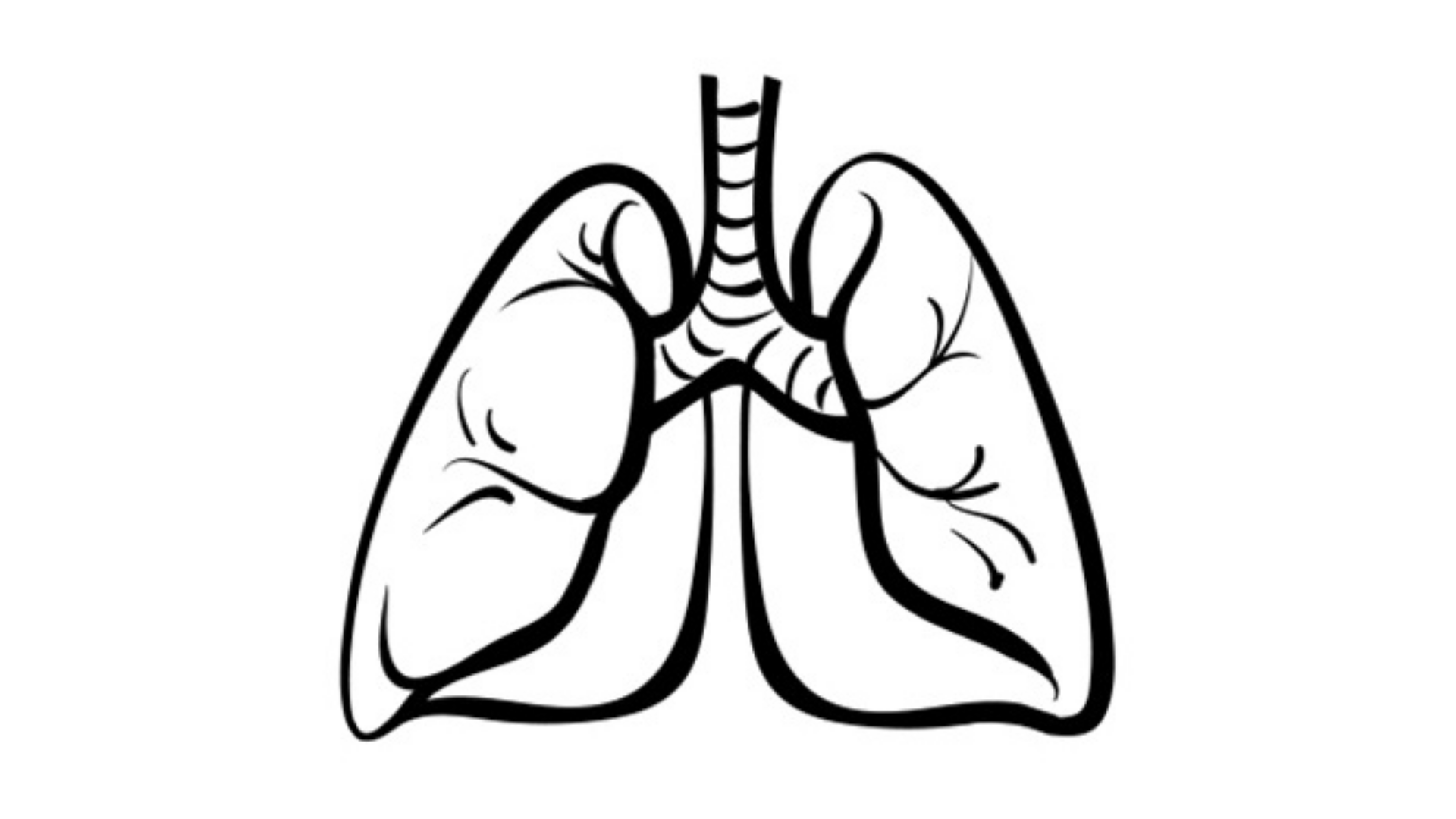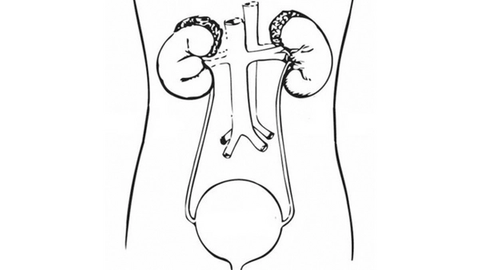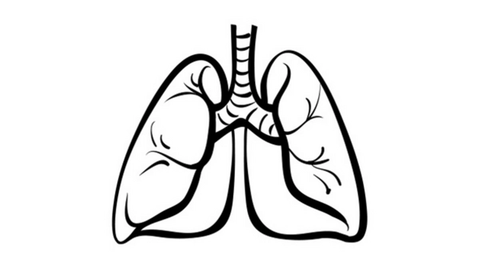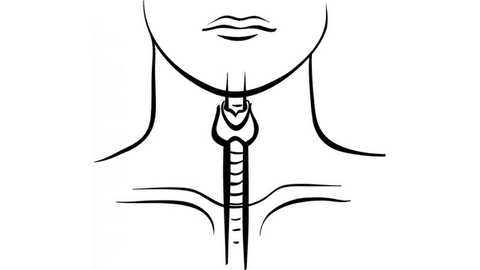Nadeem Considers Transplant and Quadruplet Regimens in Newly Diagnosed Multiple Myeloma
In an interview with Targeted Oncology, Omar Nadeem, MD, the clinical director of the Myeloma Cellular Therapies Program at the Harvard Medical School and physician at the Dana-Farber Cancer Institute, discusses transplant and quadruplet regimens in newly diagnosed multiple myeloma.
Omar Nadeem, MD

In an interview with Targeted Oncology, Omar Nadeem, MD, the clinical director of the Myeloma Cellular Therapies Program at the Harvard Medical School and physician at the Dana-Farber Cancer Institute, discusses transplant and quadruplet regimens in newly diagnosed multiple myeloma.
What do the National Comprehensive Cancer Network (NCCN) guidelines suggest for patients with multiple myeloma?
NADEEM: In terms of NCCN guidelines, the preferred regimen, as category 1, is still bortezomib [Velcade] plus lenalidomide [Revlimid] plus dexamethasone [RVd]; cyclophosphamide [Cytoxan] plus bortezomib plus dexamethasone [CyBorD] is also present in the preferred category.1
When you look at the other recommended regimens, there are a bunch of them. Carfilzomib [Kyprolis] plus lenalidomide plus dexamethasone [KRd] is something that we’ve been using for the last 5 years or so [as part of induction therapy], though [the data on KRd outcomes have] been mixed. Daratumumab [Darzalex] plus RVd is listed [as 1 of the other recommended regimens], along with ixazomib [Ninlaro] plus lenalidomide plus dexamethasone, [a regimen that] has some [data from patients who have been recently diagnosed] and is listed as category 2B.
In typical NCCN fashion, [the guidelines include many] regimens that are potentially supported by literature [as being useful in certain circumstances], but [not] much guidance [is given] about what to do with them for induction therapy. But I think a lot of this fits with the discussion that we had about practice patterns. Daratumumab plus RVd tends to be the popular choice, [and] CyBorD is reserved for patients that present with renal insufficiency.
How did the IFM/DFCI2009 trial (NCT01191060) affect whether to use transplantation in the newly diagnosed, transplant-eligible population?
The [IFM/DFCI2009] study looked at RVd with and without transplantation in transplant-eligible patients; RVd was given for 3 cycles in both [of the 2] arms [of the study].2 In one arm, patients underwent stem cell collection [but not transplantation] and had a total of 8 cycles of RVd induction therapy. In the other arm, patients had a stem cell transplant after 3 cycles [of RVd induction therapy], received 2 cycles of consolidation therapy, and then had maintenance therapy for 1 year. [The results] reported so far revealed an approximate 14-month benefit [for] progression-free survival [PFS] in favor of transplantation.
Recently at the American Society of Hematology [ASH] 2020 annual meeting, the [investigators presented an] updated analysis of the 8-year follow-up of the [IFM/DFCI2009 study, which didn’t] really demonstrate any survival benefit [for transplantation].3 But impressively, 60% of patients were alive [after] 8 years in both of arms [of the study], which I think speaks to the improvement of prognosis that’s happened in this population. If [we] dig deeper, very few of the patients in this study, even in the relapse setting, were daratumumab exposed. This is somewhat older data that [don’t] really reflect what we see in the real-world population now.
What other trials are looking into this treatment strategy?
The Dana-Farber Determination [DFCI 10-106] trial [NCT01208662], which was a sister study to [IFM/ DFCI2009], opened at the exact same time [in 2010], and we still haven’t reported our results. The difference between the 2 studies is that in the [Determination trial], maintenance therapy with lenalidomide is continuing until disease progression. So everybody’s eagerly awaiting the results of [the Determination] trial to see, one, what the [patient outcomes] look like and how they compare to [those of IFM/DFCI2009 trial results], which had just 1 year of maintenance [therapy]. And two, what sort of PFS benefit, if any, we see with transplantation.
I think it is important to know [whether] the PFS benefit is maintained with transplantation; about 80% of patients got a transplant at the time of relapse in this trial. So it’s not really a [question of whether you] should do a transplant versus not; it’s really more [a question of] early versus deferred [transplant] for the vast majority of patients. The data [from these trials are what] we’re using when we weigh the pros and cons of transplantation.
[Another issue is the] depth of response to therapy. If you look at [data from] the [IFM/DFCI2009] study, patients that have minimal residual disease [MRD]–negative disease tend to do better than patients that have MRD-positive disease.4 [The trial investigators] looked at this using many methods of MRD assessment. The method that we use in the clinic, though not necessarily in everybody [but just in] select cases, is the clonoSEQ adaptive next-generation sequencing MRD test of bone marrow [samples]. [By clonoSEQ], about 30% of patients in the transplant arm [of the Determination trial] were MRD negative, and about 20% [of patients in the control arm] were MRD negative. So [by doing a transplant soon after diagnosis], you’re putting more patients into the MRD-negative category, which should translate into better prognoses, [as it did in the IFM/DFCI2009 study]. [Nevertheless], patients that became MRD negative with RVd alone, which was a pretty low number, 20%, still did pretty well. So achieving that deep-response, [MRD] clearly translated into a [PFS] benefit in the [IFM/DFCI2009] trial. Several previous trials have shown not only a PFS benefit, [but also] an overall survival benefit [associated with] MRD-negative disease.
How did transplantation with doublet induction therapy do for patients in the FORTE trial (NCT02203643)?
[This is] an important trial that I think [is potentially] going to set some trends, both in terms of transplant use and also maintenance therapy.5 FORTE was an Italian study that looked at 3 different treatment arms [in patients who recently received a multiple myeloma diagnosis]. In arm 1, patients received carfilzomib plus cyclophosphamide plus dexamethasone [KCd] induction therapy; in arms [2 and 3, patients received KRd] induction therapy, but the difference was that in arm 3, there was no transplant, just stem cell collection. In arms [1 and 2], patients had 4 cycles of induction therapy, had a transplant, and had consolidation therapy for 4 cycles. There was also a second randomization to maintenance therapy with carfilzomib plus lenalidomide [KR] versus just lenalidomide [R] alone. So [the trial had] 2 separate randomizations: 1 for induction and consolidation [therapy] and [1 for] maintenance therapy.
[The FORTE] trial initially showed that patients that had no transplant [and received 12 cycles of KRd [KRd12] had the same [or better] rates of MRD negativity and very good partial response compared with the group that had KRd plus transplant.6 It’s pretty clear that the [KCd] arm was the inferior arm, [as it had the lowest PFS]. So not having an [immunomodulatory drug and a proteasome inhibitor (PI)] as part of induction and consolidation therapy certainly impacted the response rates. But we [were] expecting that [the similarity in] MRD-negative rates and response rates across the KRd transplant and KRd12 arms was going to translate into [similar rates of] PFS. [We’re] not seeing that. PFS still seems to be best in the group that had a transplant, even in the context of KRd induction and consolidation therapy.
Across the board, in terms of the risk [groups defined by] fluorescence in situ hybridization test category, lactate dehydrogenase level, and International Staging System stage, [the data] seem to favor the transplant arm. So [these findings] look very similar to [those of] the [IFM/DFCI2009] study and other transplant trials, [in that] we’re starting to see the PFS benefit show up relatively early. I’ll be curious to see, as [these data mature], what the longer-term benefit looks like.
What was the efficacy with double maintenance on the FORTE trial?
The second randomization of the trial was KR versus R as maintenance therapy. [In the KR arm], the carfilzomib part was continued for 2 years, and then patients had lenalidomide maintenance; in the R arm, patients had lenalidomide maintenance alone. In these data, [we] can see the [PFS] benefit of the double maintenance versus just single-agent lenalidomide maintenance, [and this is a trend that we’ve been seeing more and more in the clinic]. [The trial investigators haven’t yet] reported on patients that may have gotten, let’s say, KRd12, no transplant, but then had a double maintenance. The question is: Did [receipt of double maintenance] offset the lack of transplant? [But the trial results] haven’t really [been] broken down in that way yet. But clearly, the double maintenance had a PFS benefit and also a benefit [in terms of] patients converting to MRD-negative disease at a much higher rate [compared with patients who received] single-agent lenalidomide maintenance.
[The FORTE trial enrolled] all comers, whereas historically, we’ve reserved PI therapy, or doublet maintenance, for patients that have high-risk disease, [such as those with a] 17p deletion or a t(4;14) translocation. But [the trial findings show the] benefit of doublet maintenance therapy in the entire population. So this is something to follow. This is not bortezomib maintenance, which is something that we do a lot more of than carfilzomib maintenance, but it does [follow] the same general principle of intensifying therapy after transplantation.
Please discuss the quadruplet versus triplet induction therapy in the CASSIOPEIA trial (NCT02541383).
Now [we’re] shifting gears to consider 4-drug [regimens for induction and consolidation therapy]. The CASSIOPEIA study was a phase 3 study, mainly done in Europe, [that] looked at bortezomib plus dexamethasone plus thalidomide [VTd] with or without daratumumab.7 In this trial, [patients were randomly assigned] 1:1 to get VTd for 4 cycles versus daratumumab plus VTd [dara-VTd].
There was no deferred transplantation here; all the trial patients were transplant eligible [and received] a transplant, [followed by] 2 cycles of consolidation therapy, either with VTd or dara-VTd. Then patients were randomly [assigned] either to receive no further therapy with observation until disease progression or to receive daratumumab maintenance therapy every 8 weeks for 2 years.
The primary end point of [CASSIOPEIA], stringent complete response [sCR], was much [higher in patients who received] quadruplet therapy than those who received triplet therapy: 29% versus 20%. This translated into much higher rates of MRD-negative disease [in the quadruplet therapy group], particularly after transplantation. The subgroup analysis of PFS is starting to favor the dara-VTd group, although [the study] hasn’t reached its median PFS yet, so we don’t know the benefit of the quadruplet therapy in the setting of transplantation. Hopefully we’re going to get some updates [on this study] at this year’s ASH meeting to see what the absolute benefit is. But it clearly looks like the deeper response [in the quadruplet therapy group] is translating into a better PFS, as we’ve seen in other studies.
What were the results of the GRIFFIN trial (NCT02874742)?
The more United States–based regimen is daratumumab plus RVd [dara-RVd]. The GRIFFIN trial is a fairly large phase 2 study, with about 100 patients in each arm, that looked at dara-RVd versus RVd [alone] in the context of transplantation.8 Patients did not [have] deferred transplantation. Like the CASSIOPEIA trial, patients received 4 cycles [of induction therapy], a transplant, and then 2 cycles of consolidation therapy. [For maintenance therapy], patients were either on daratumumab plus lenalidomide or just lenalidomide maintenance alone. Daratumumab was continued for 2 years, and everybody had lenalidomide maintenance [beyond 2 years]. The trial’s primary end point was sCR at the end of consolidation therapy.
The GRIFFIN trial had very similar results [to the CASSIOPEIA trial]. At the end of induction and consolidation therapy, really at every step along the way of follow-up, the sCR rate was much [higher] with daratumumab-based therapy versus just RVd therapy. This [trial] met its primary end point, [with findings demonstrating a] pretty high rate of MRD-negative disease, approaching about 50% in the quadruplet therapy group, which is definitely higher than [the rate in the] RVd group, [again in a setting of] transplant. This trial confirmed that the addition of an antibody [agent] to the up-front setting deepens or improves the rate of MRD negativity. We’re waiting to see what the [longer-term] PFS looks like for this and other trials [of quadruplet therapy with transplantation].
[In the GRIFFIN trial], MRD negativity rates after 12 months of maintenance therapy were 62% [in the quadruplet therapy group] versus 27% [in the RVd group].9 So [the clinical benefit is] much higher, [about] twice as high, with [quadruplet] therapy versus triplet therapy. This benefit does seem to be across the board [in most patient subgroups], although [less so in] high-risk patients. A lot of us choose dara-RVd [when we have] a high-risk patient or a younger patient in front of us because we feel like we want to do more [for them]. But if you look at the data, the highrisk patients, unfortunately, do not really benefit as much as we would like them to with these intensified induction approaches. So [high-risk and younger] patient populations still represent an unmet need in myeloma. While the general principle of doing more certainly make sense, trials—including this one—really [don’t] show a clear benefit [of quadruplet therapy] in high-risk patient populations. This trial is just 1 example. [If we] look at some of the other daratumumab up-front trials, this trend is there quite a lot. [We’re] not seeing the benefit [of quadruplet therapy] that we were hoping for [in some patient subgroups].
It’s too early to comment on [the survival data for the GRIFFIN trial], but [we] can start to see the curves separate for PFS. So very similar to what we saw with the CASSIOPEIA trial, at 2 years, [PFS is] 90% even in the RVd arm, so that’s pretty good. But now we care a lot more [about PFS] at years 4, 5, 6, and hopefully beyond that. But certainly, it looks promising so far. I think as [these data mature] and the benefit [of quadruplet therapy] is confirmed, [we’re] going to see more widespread use of dara-RVd than we see now. [We’re] a little bit humbled, at times, by some of the trials in which the responses [to quadruplet therapy] looked better [than responses to the control therapy] but didn’t really translate into meaningful clinical outcomes. I don’t think [the GRIFFIN trial] is going to end up there, but this is why [there are] still some reservations about [using quadruplet therapy in] every patient as opposed to using it selectively.
Toxicity is an important [issue with] quadruplet therapy. In the GRIFFIN trial, [quadruplet therapy was associated with] higher hematologic toxicity, although I would say most of this [toxicity] is pretty easy to manage. There were higher rates of neutropenia and thrombocytopenia in patients that got quadruplet therapy [than in patients who got triplet therapy]. We use growth factor support at times [to address toxicity], but dose reductions due to toxicity are not uncommon. There are also many different ways to give [RVd, for example, by switching from] twice-weekly to once-weekly bortezomib [or adjusting] the dose of lenalidomide. We can tailor the regimen as long as it’s a quadruplet therapy and [the patient is] getting active doses; the most important thing is keeping patients on therapy. So more dose modifications occur with this 4-drug backbone than with a 3-drug [backbone].
In terms of nonhematologic adverse events [in the GRIFFIN trial, we] see high rates of fatigue. More importantly, the [rate of] respiratory infections was [higher] with the quadruplet, antibody-based therapy [compared with triplet therapy]. We had some reservations about this [issue] a year ago, when we were at the height of the pandemic and were debating [whether] daratumumab was safe to use because of [the elevated] risk [of respiratory infections]. The rates [of respiratory infection] are certainly higher [with quadruplet therapy compared with triplet therapy]. [However], the vast majority of time, these [infections] are upper respiratory colds, not grade 3 adverse events such as hospitalizations or pneumonias, although [those] certainly can occur. But [the higher risk of infections associated with quadruplet therapy] is something to [be aware of] and counsel patients about up front.
I think the take-home message is that with more intensified therapy up front, you get deeper responses. We’re seeing that across the board in all of these studies; however [we] intensify therapy, whether it’s with a VTd backbone, an RVd backbone, or even with KRd [plus] transplant, we’re starting to see [response rates] that are far better than what we have seen previously with triplet therapies and transplant. Hopefully [this is] going to translate into better outcomes—and we think that it will—but [the trial] data still [have] to mature so that we can get exact numbers. We’re still [basing our prognosis of] most patients on the [IFM/DFCI2009] study, but we expect [prognosis] to be significantly better now than what we [saw in that study].
Are there studies of quadruplet therapy without transplantation?
Some phase 2 studies that we’re doing [at Dana-Farber and others done by Memorial] Sloan Kettering [Cancer Center] show very high rates of MRD-negative disease with a quadruplet backbone such as daratumumab plus KRd. I think [we’re] going to start to see more of [those] data come out. Then there will always be a discussion about what the transplant is adding, in terms of PFS and survival, in the setting [of quadruplet therapy], even though we haven’t [yet] answered [that question in the setting of] triplet therapy.
REFERENCES
1. NCCN. Clinical Practice Guidelines in Oncology. Multiple myeloma, version 5.2021. Accessed March 22, 2021. https://bit.ly/3fa9Yx5
2. Attal M, Lauwers-Cances V, Hulin C, et al; IFM 2009 Study. Lenalidomide, bortezomib, and dexamethasone with transplantation for myeloma. N Engl J Med. 2017;376(14):1311-1320. doi:10.1056/NEJMoa1611750
3. Perrot A, Lauwers-Cances V, Cazaubiel T, et al. Early versus late autologous stem cell transplant in newly diagnosed multiple myeloma: long-term follow-up analysis of the IFM 2009 Trial. Blood. 2020;136(suppl 1):39. doi:10.1182/blood-2020-134538
4. Perrot A, Lauwers-Cances V, Corre J, et al. Minimal residual disease negativity using deep sequencing is a major prognostic factor in multiple myeloma. Blood. 2018;132(23):2456-2464. doi:10.1182/blood-2018-06-858613
5. Gay F, Cerrato C, Petrucci MT, et al. Efficacy of carfilzomib lenalidomide dexamethasone (KRd) with or without transplantation in newly diagnosed myeloma according to risk status: results from the FORTE trial. J Clin Oncol. 2019;37(suppl 15):8002. doi:10.1200/JCO.2019.37.15_suppl.8002
6. Gay F, Musto P, Scalabrini DR, et al. Survival analysis of newly diagnosed transplant-eligible multiple myeloma patients in the randomized Forte trial. Blood. 2020;136(suppl 1):35-37. doi:10.1182/blood-2020-136907
7. Moreau P, Attal M, Hulin C, et al. Bortezomib, thalidomide, and dexamethasone with or without daratumumab before and after autologous stem-cell transplantation for newly diagnosed multiple myeloma (CASSIOPEIA): a randomised, open-label, phase 3 study. Lancet. 2019;394(10192):29-38. doi:10.1016/S0140-6736(19)31240-1
8. Voorhees PM, Kaufman JL, Laubach J, et al. Daratumumab, lenalidomide, bortezomib, and dexamethasone for transplant-eligible newly diagnosed multiple myeloma: the GRIFFIN trial. Blood. 2020;136(8):936-945. doi:10.1182/blood.2020005288
9. Kaufman JL, Laubach JP, Sborov D, et al. Daratumumab (DARA) plus lenalidomide, bortezomib, and dexamethasone ( RVd) in patients with transplant-eligible newly diagnosed multiple myeloma (NDMM): updated analysis of Griffin after 12 months of maintenance therapy. Blood. 2020;136(suppl 1):45-46. doi:10.1182/blood-2020-137109
